
Before the practice of cooking our food, the human diet consisted mostly of raw, unheated food found in nature.
A lot of our diet now comes from food that has been prepared and cooked, but we also should not forget to eat whole, raw and nutritious foods that are free of excessive processing or cooking.
There are many people who choose to consume raw foods as all or at least the majority of their diet. Though there is not a concrete scientific definition of a raw foodist, you can consider someone a raw foodist if they consume at least 70 percent of their food in the raw form. Food is considered raw if it has not been heated above 116 degrees Fahrenheit. The reason for this specific temperature is because living food enzymes in raw foods are destroyed once they are heated above this mark.
The health benefits of eating raw foods are plentiful. They include having more energy, losing weight, having better skin and preventing chronic illnesses.
Below is a list of raw foods that are easy and beneficial to incorporate into your diet.
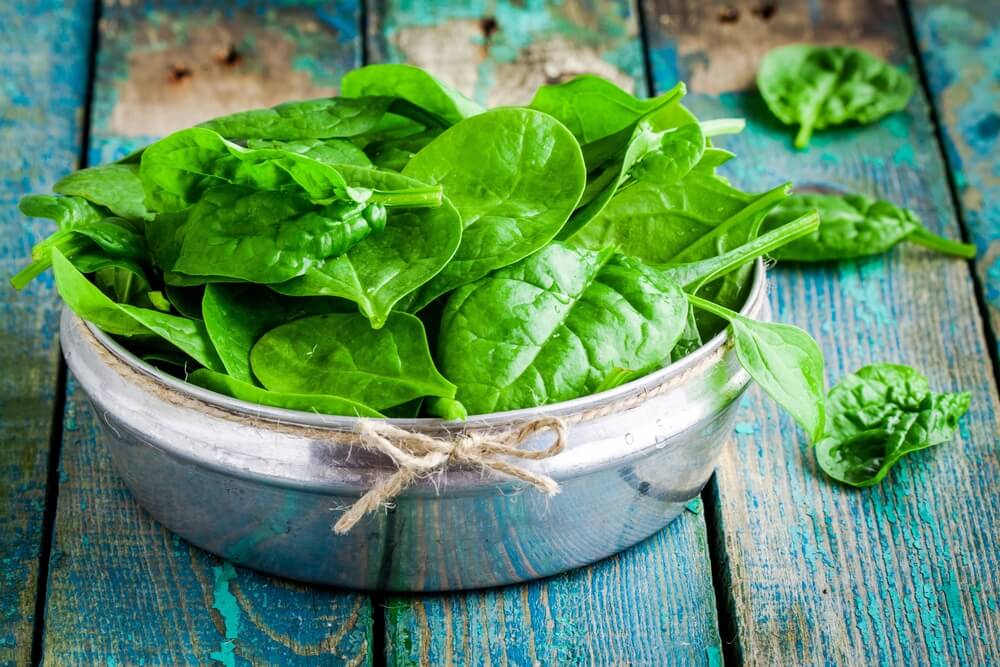
#1 Leafy Greens
No surprise here, we are constantly hearing about eating more greens. Even if we already eat greens, we are still told to eat more! This is because leafy green vegetables are truly great for our health. We can reap so many benefits from eating them, so the more the better. The problem, in case you haven’t already noticed, is that it is incredibly difficult to eat enough greens in one day. This is why we are all strongly urged to really give an effort in adding them to our recipes as much as possible.
There are so many different types of greens to play around with, that you should simply go through this list of leafy greens and try one that you haven’t already had this week: Spinach, collard greens, mustard greens, kale, swiss chard, watercress, arugula and napa cabbage. Cruciferous vegetables such as steamed kale, collard greens, and mustard greens are able to bind to bile acids in the gut and they also act to lower cholesterol. Mustard greens specifically contain compounds that have cancer protection and anti-inflammatory properties. Ideally, you should be eating at least 2 cups of cruciferous vegetables four to fives times a week.
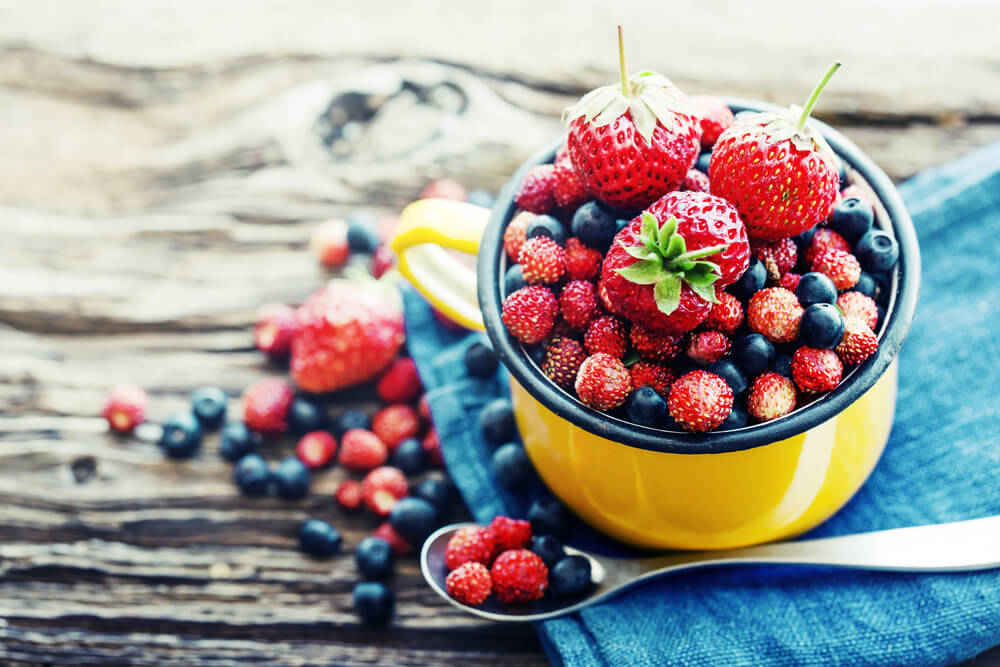
#2 Berries
Blueberries, bilberries, cranberries, acai berries, goji berries, you get the picture, there are a lot of different types of berries. Did you know that strawberries and raspberries aren’t technically berries in the botanical sense?
Did you know that strawberries and raspberries aren’t technically berries in the botanical sense?
Interestingly enough, bananas, watermelons, and avocados are berries. Regardless, they are all good for you. Berries are important to eat as they generally have the highest antioxidant value.
They are also delicious to eat, and you really shouldn’t have a hard time adding more berries to your diet as snacks on the go, whether that be eating while running errands, at school or at work. Frozen berries are the biggest bang for your buck as you can purchase a large bag all at once whereas fresh berries are usually packaged in smaller portions. Frozen berries have just as many nutrients, if not more than the fresh versions.
Why?
Frozen berries are flash frozen after harvest, thereby trapping the nutrients within. They are the perfect ingredient for an endless variety of fruit and green smoothies.
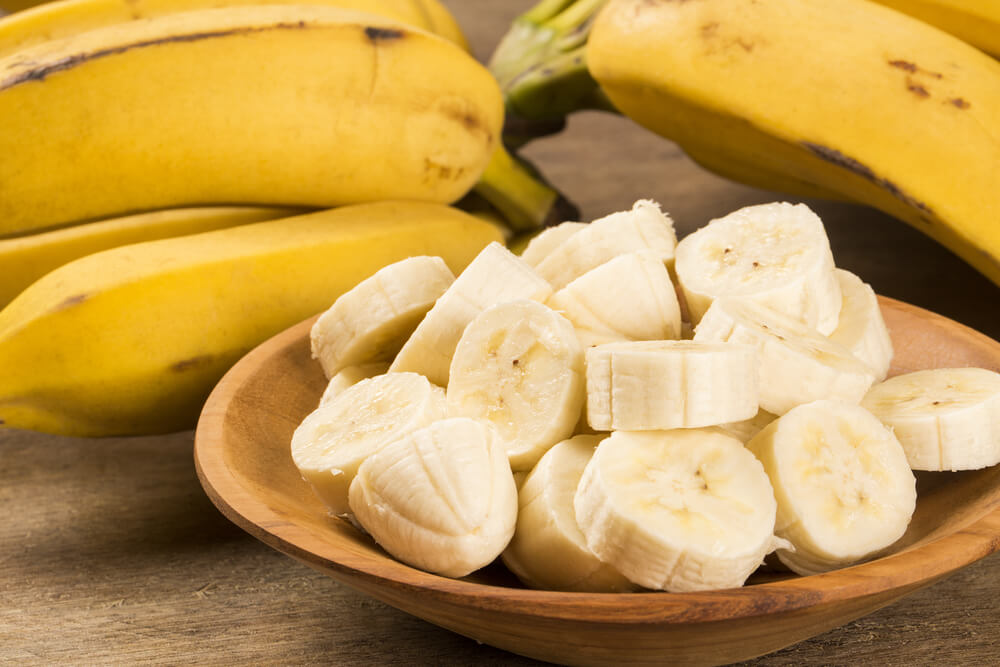
#3 Bananas
When you hear the word potassium, chances are that the first thing you think of is bananas. It’s true, bananas have long been touted as the best source for potassium. However, this isn’t really fair because bananas have so many other things going for them than just their high potassium content. They should actually be known as a great source of vitamin B6 and manganese. Just one banana provides 22 percent of your daily value of vitamin B6, 17 percent daily value of vitamin C, 16 percent daily value of manganese, 12 percent daily value of fiber and potassium, 10 percent daily value of biotin and copper and 8 percent daily value of magnesium.
As you can see, bananas are not only good for their potassium content, they are also full of other very important nutrients. Bananas are also probably one of the easiest things to eat. Even people who normally don’t like eating fruits find themselves enjoying bananas. They are available for harvest all throughout the year. You can easily get several of them included in your diet each day by eating them whole, sliced or blended into smoothies.
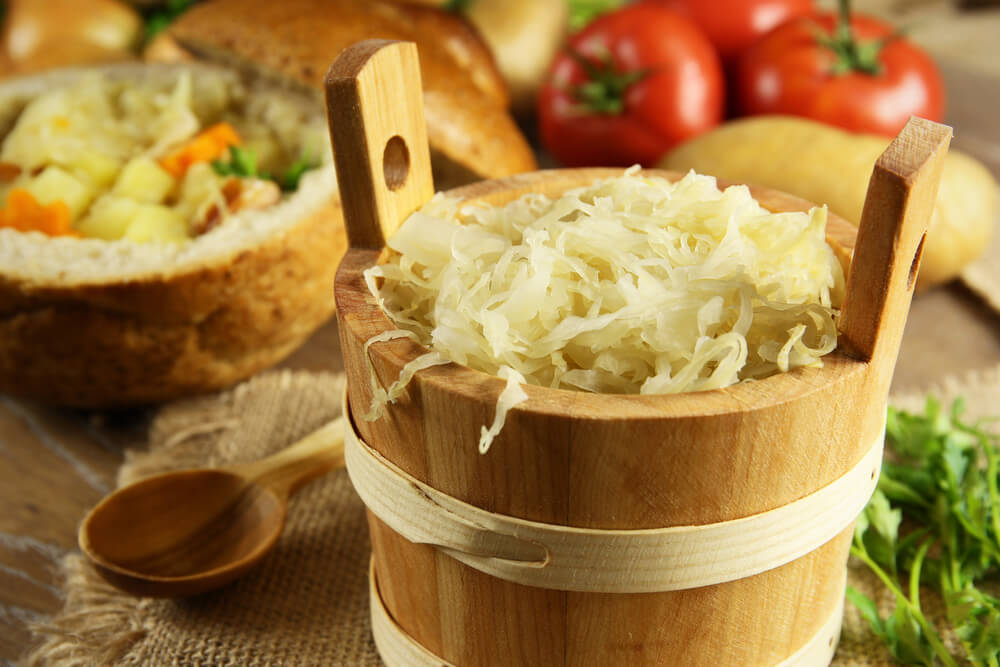
#4 Sauerkraut (and cultured/fermented foods)
While cultured and fermented foods may be a slight departure from what some may consider to be raw food in the strictest interpretation of the term, the fact remains that these foods have been a vital part of the diet of many if not all cultures. People consumed sauerkraut way back in the Roman era. Asian cultures also frequently eat pickled vegetables including cucumbers, carrots, turnips, and kimchi. The birthplace of fermented vegetables is thought to be in China. All of these cultured vegetables are great for your health, and sauerkraut is just one example.
The word sauerkraut translates to sour cabbage in German. It can be either made at home or purchased at the store. It is full of live probiotics and beneficial microbes and enzymes. This is good for your digestion as the probiotics and fiber from the cabbage support healthy bacterial growth in your digestive tract. If you do buy it from the store, just make sure that it is raw, meaning unpasteurized and uncooked. This will ensure that the beneficial bacteria in the sauerkraut are alive and truly going to be beneficial in your body.
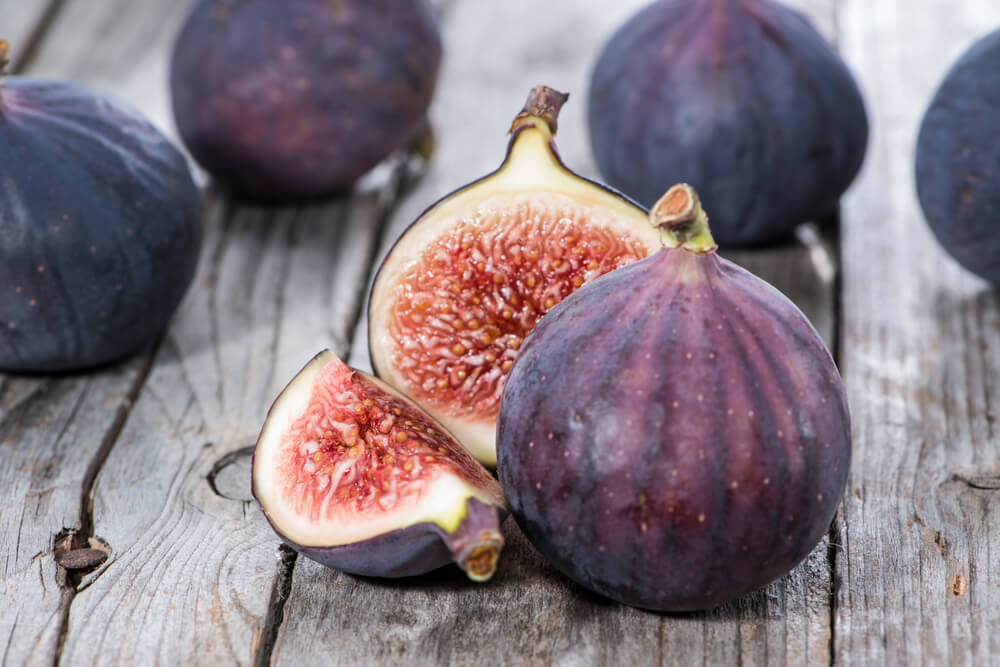
#5 Figs
Figs are curious looking little fruits for sure. They have a somewhat rough outer surface, with a soft, beautifully pink colored inside. They also have a mildly sweet and refreshing taste that is unlike other fruits. These small fruits are worth a try if you are in the mood for something new and exotic. Sadly, fresh figs are only available for a short season in Asia and shipped to America. However, dried figs are found all throughout the year.
Figs have a very long list of potential benefits including that they are used to treat sexual dysfunction, indigestion, constipation, bronchitis, diabetes, hypertension and even asthma. It’s no surprise that there are so many health benefits when you take the time to discover the wealth of vitamins and minerals that they contain. These nutrients include vitamin A, B1, B2, iron, potassium, phosphorus, calcium, and manganese. Just be careful not to eat figs in excess as some experience diarrhea after consuming too many.
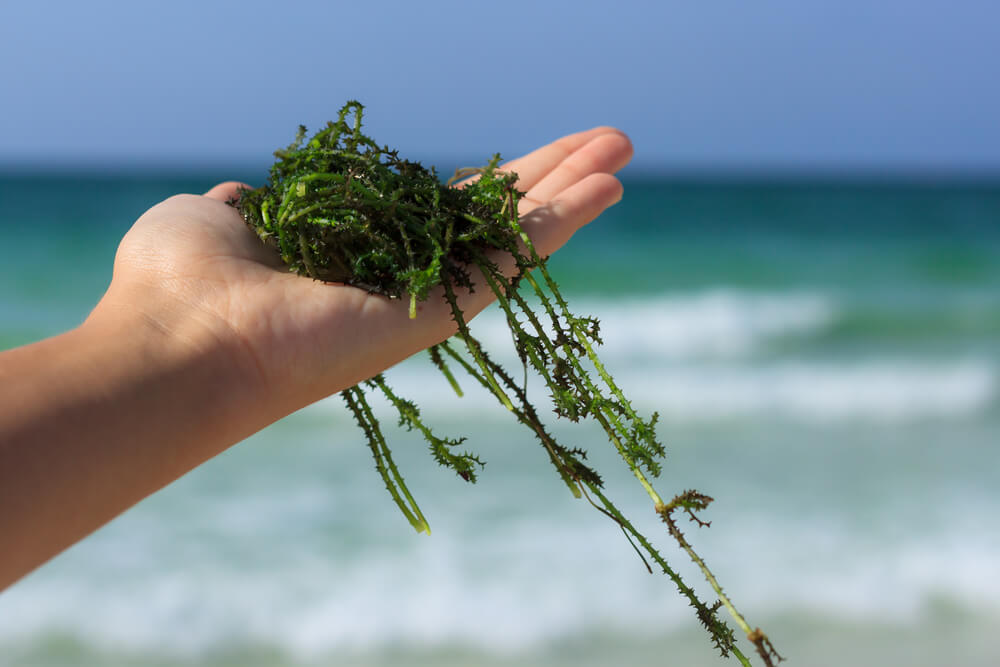
#6 Sea Vegetables
Seaweeds, including nori, kelp, arame and wakame, have the highest amount of average nutrients compared to land plants. They also are the richest source of chlorophyll. Not only are seaweeds extremely high in minerals, they are also the source of minerals that are the most easily assimilated into the bloodstream. Interestingly enough, Eastern medicine has long used sea vegetables to detoxify, cleanse and alkalize blood. Not surprisingly, iron is one mineral that is highly bioavailable in seaweed.
Check out this seaweed that tastes like bacon.
The iron in seaweed also comes conveniently packaged with vitamin C, which helps to further increase the bioavailability of plant sources of iron. This is a perfect combination that is delivered by nature in sea vegetables. One easy way to add more seaweeds to your diet is to soak some dried wakame in warm water and tossing it in some salad after it expands. Another more traditional way is to make miso soup and add pre-soaked dried seaweed to it. The easiest way to consume seaweed is to eat the conveniently packaged square boxes of seaweed snacks.
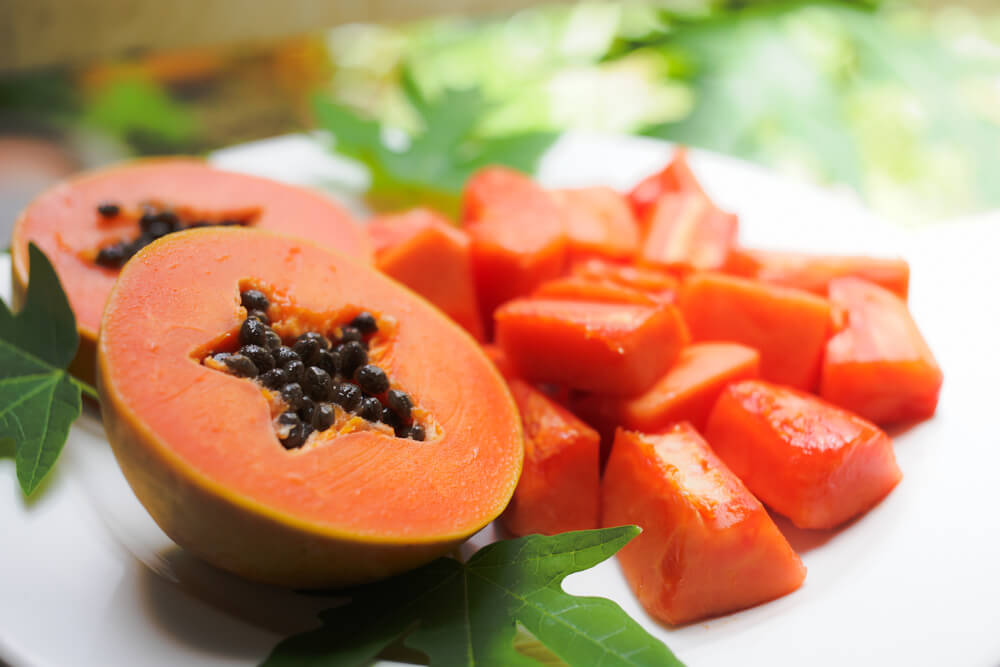
#7 Papayas
It’s true: Papayas are an acquired taste for many people. Even if you don’t like it at first, don’t give up. Keep trying it and you’ll find your taste buds will eventually become accustomed to its unique taste. This is an once exotic fruit that has been made common and can be easily found anywhere today. Papayas are available year round for the most part. It’s easy to feel like you are vacationing somewhere in the tropics while you slice open a ripe papaya.
The deep saturated orange color comes from the carotene content in these fruits. Some of the other nutrients found in papaya are vitamin C, folate, B vitamins, copper and flavonoids. Papayas aid against heart disease, promote digestive health, support the immune system, protect vision, prevent rheumatoid arthritis and prostate cancer when eaten with green tea.

#8 Chia seeds
The spotlight on flax seeds has shifted to a new star, chia seeds. Chia seeds are making their way to the spotlight because of their omega-3 and antioxidant content that is even more impressive than that of flax seeds. Chia seeds are also a complete source of protein in the plant kingdom. One ounce of chia seeds contains 11 grams of fiber and 4 grams of protein. And, 5 out of their 9 grams of fat per serving are omega-3s.
So far so good, right?
What’s more impressive is the micronutrient content.
One ounce has 18 percent of the Recommended Daily Allowance (RDA) of calcium, 27 percent RDA of phosphorus, 30 percent RDA of manganese, 30 percent RDA of magnesium, and decent amounts of zinc, niacin, potassium, thiamine, and riboflavin as well. Remember, this is all packed into only one ounce! You reap all these nutrients from just 137 calories of one ounce of chia seeds. Moreover, chia seeds are loaded with antioxidants which help fight against free radical production.

#9 Avocados
As previously mentioned, avocados are actually fruits belonging in the berry family. They originate from Central and South America but now are grown in most tropical and subtropical climates. In the United States, Florida and California are the main commercial producers of avocados. Avocados are a source of healthy monounsaturated fat with many potential health benefits. They contain vitamin K, folate, vitamin C, potassium, vitamin B5, vitamin B6, vitamin E, and some magnesium, copper, iron and zinc as well. The potassium content from avocados support healthy blood pressure levels.
Research suggests that avocados may promote heart and liver health, and lower inflammation. Other possible benefits include lowered risk of depression, improved digestion, enhanced vision, and cancer protection. Some recommend to not necessarily eat avocados daily but to instead add them in as a part of your balanced diet. One of the easiest ways to eat avocado is to slice or dice it up once it is ripe and add it to salads or sandwiches in many different combinations. Another popular way to eat avocado is mashed up as guacamole.
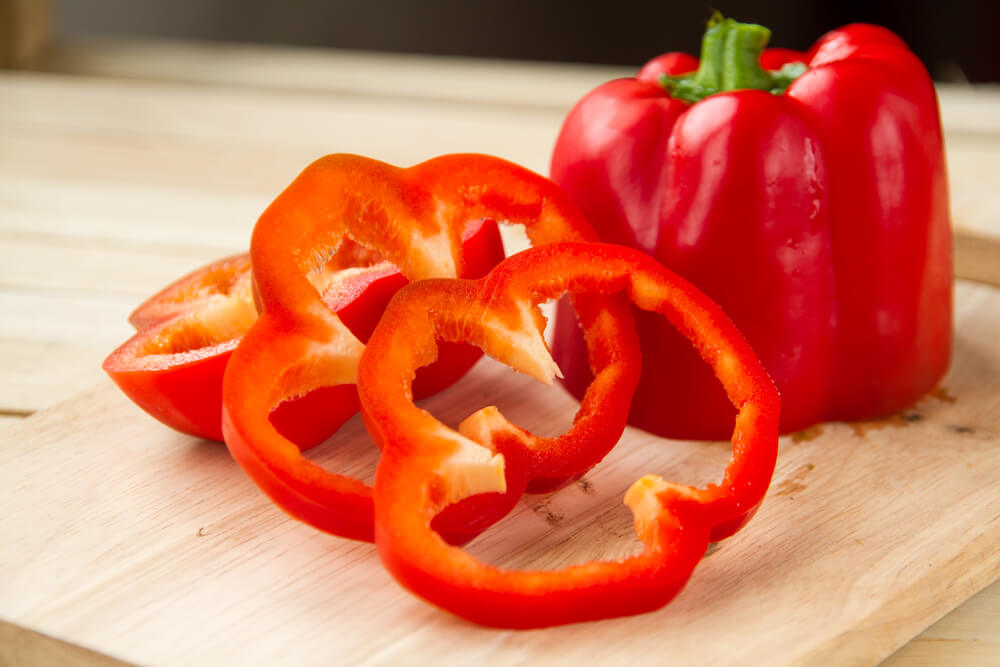
#10 Bell Peppers
Bell peppers come in different colors and sizes. They are sweet and tangy instead of hot because they have minimal capsaicin content when compared to other members of the pepper family. The fact that they do not give a spicy or hot sensation is good news for those that like milder foods and cannot tolerate spiciness. Bell peppers have an amazing amount of antioxidants and phytonutrients, including vitamin E, vitamin B6, beta-carotene, and zeaxanthin. Since bell peppers are so rich in antioxidants as well as anti-inflammatory nutrients, they are expected to provide potential anti-cancer effects.
Conclusion
The risk of cancer increases with exposure to chronic inflammation and oxidative stress from the environment. Regular and frequent intake of antioxidant-rich foods such as bell peppers should help combat these risks and lower the risk of developing cancer. It’s also very easy to eat more bell peppers. They can be purchased at virtually all grocery stores and some people even grow them in their yards as they make great garden plants. You can slice strips of different colored bell peppers to dip in hummus. Another great way to incorporate them into your diet is to chop them up and add them to a vegetable stir fry or to add color to a salad.
By Roxxi Li
Terry
Latest posts by Terry (see all)
- How Important Are Net Carbs For Building Huge Muscle? - Apr 28, 2017
- The Matt Damon Workout Explained - Apr 27, 2017
- Watercress – Benefits And The Best Way To Consume It - Apr 26, 2017










